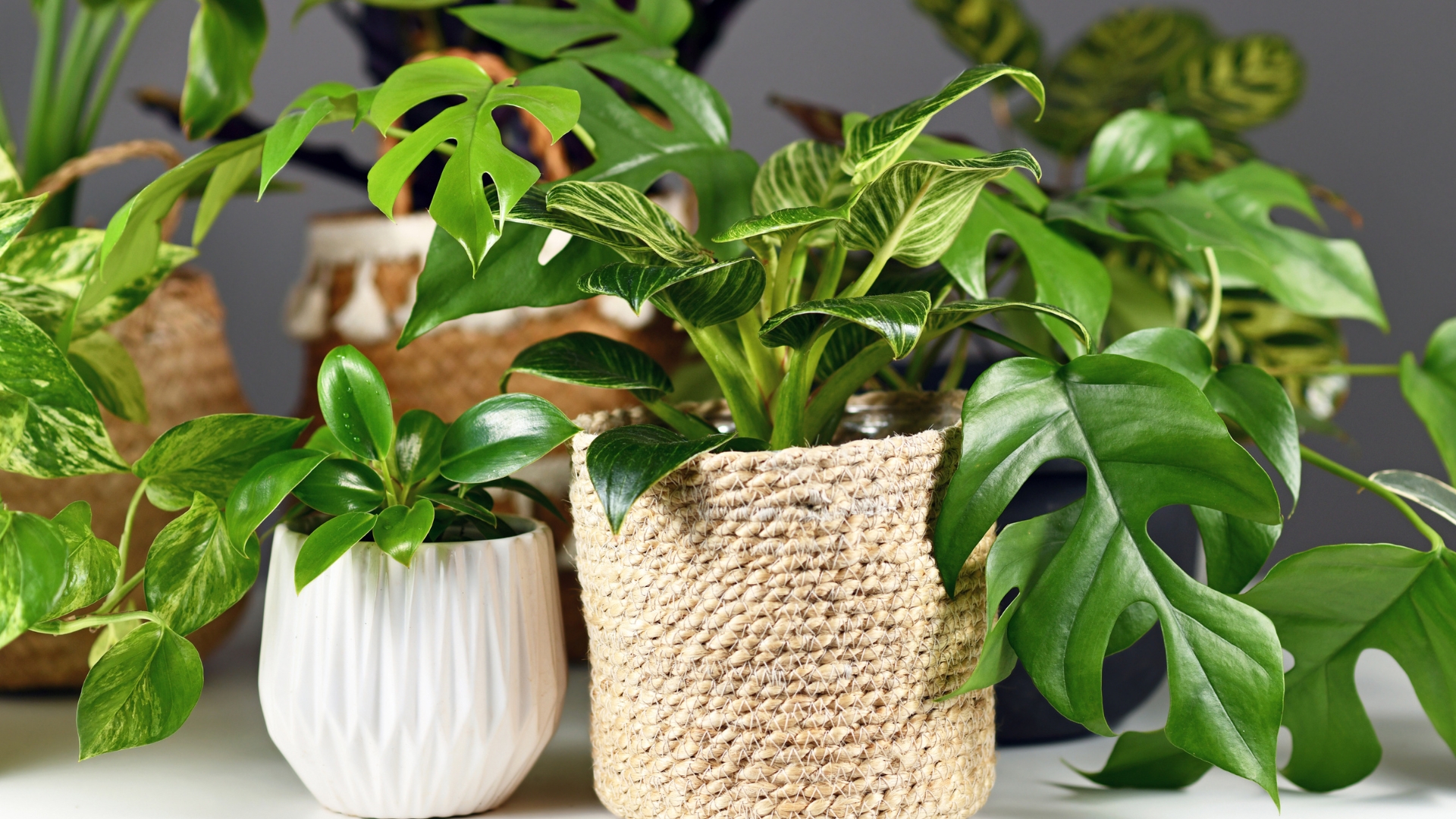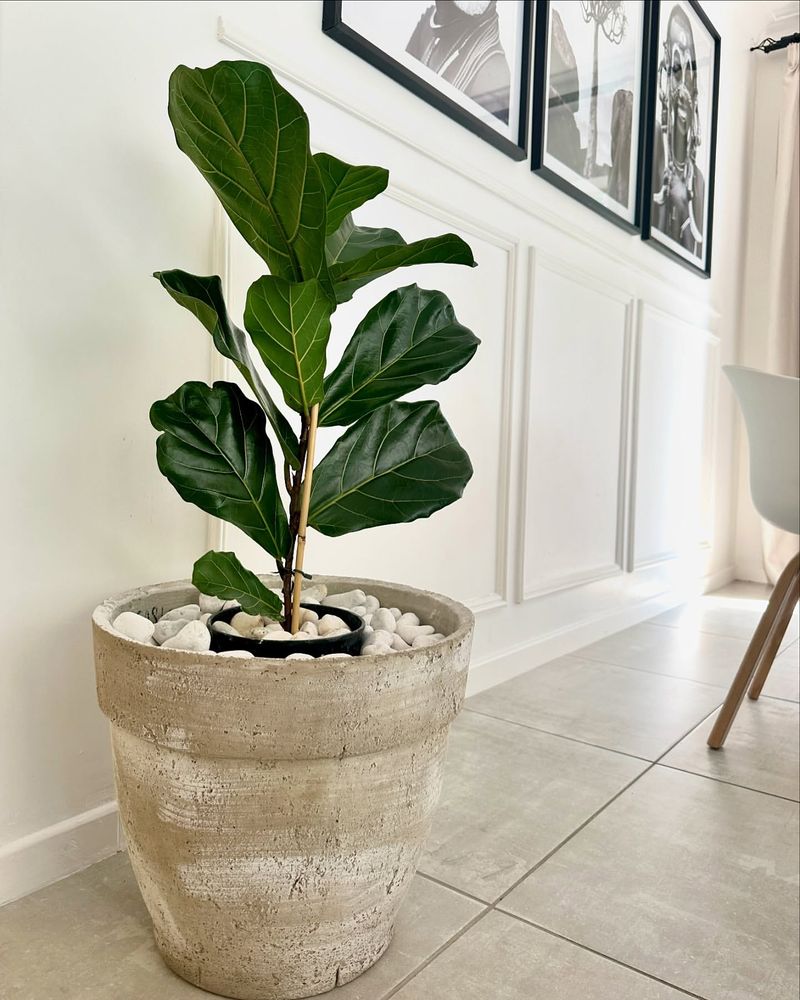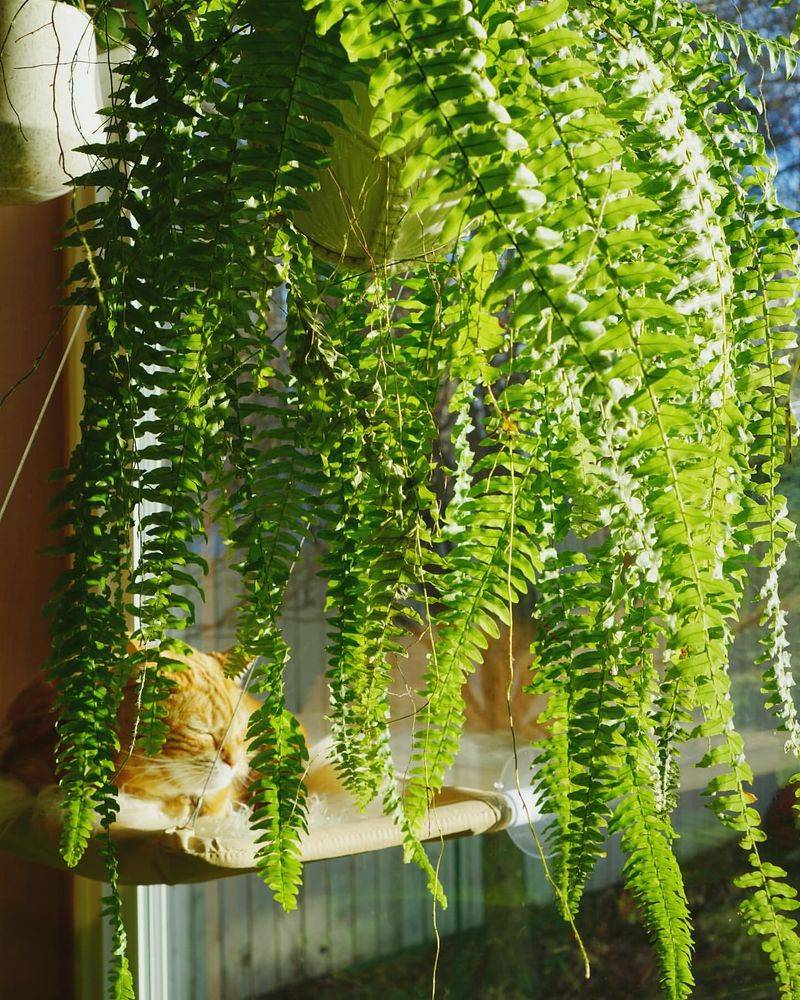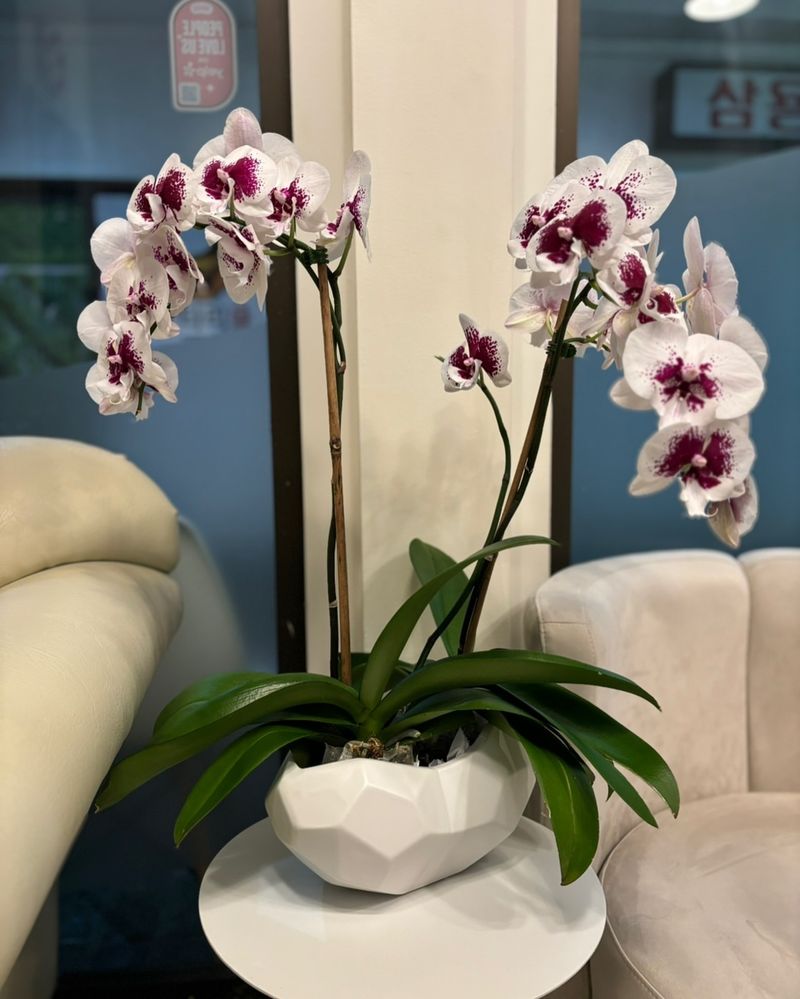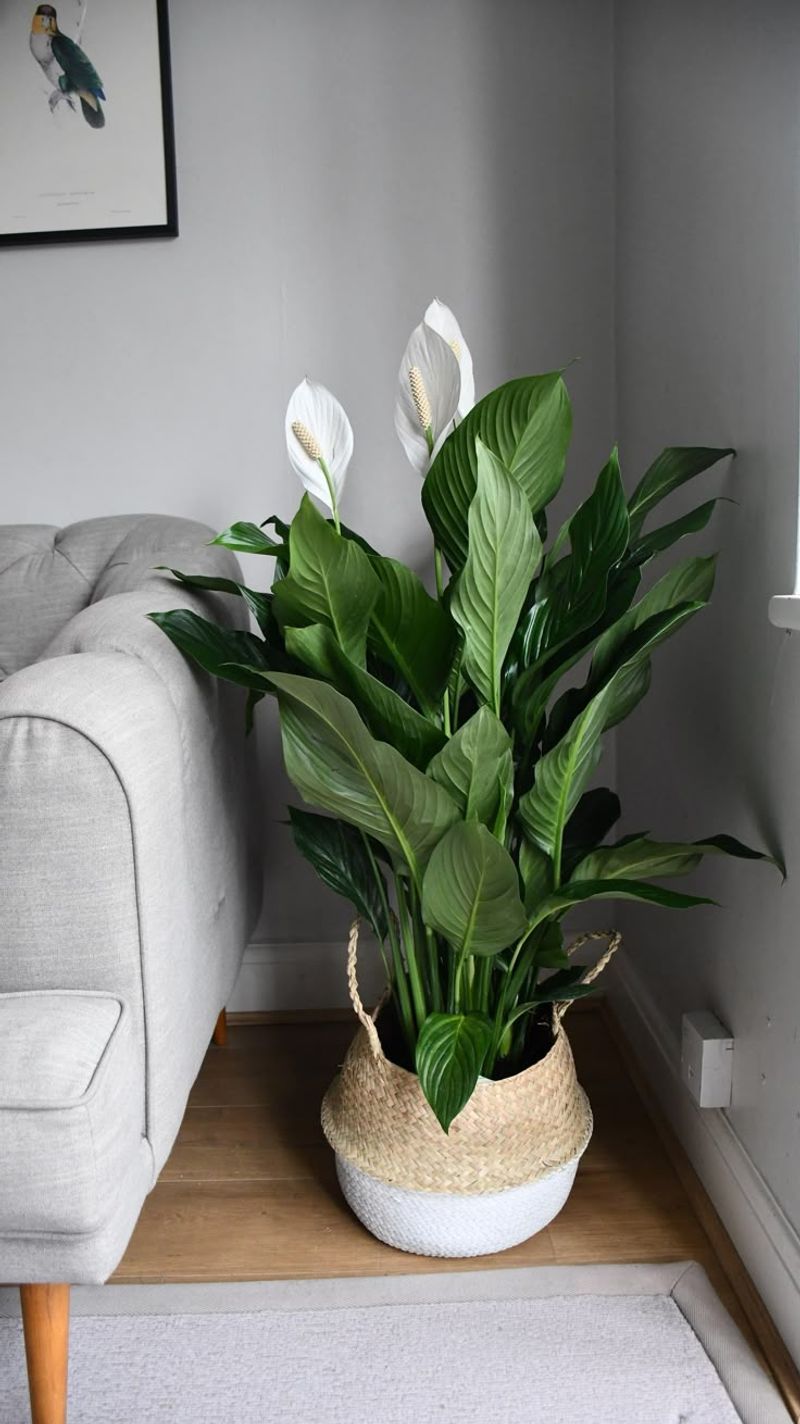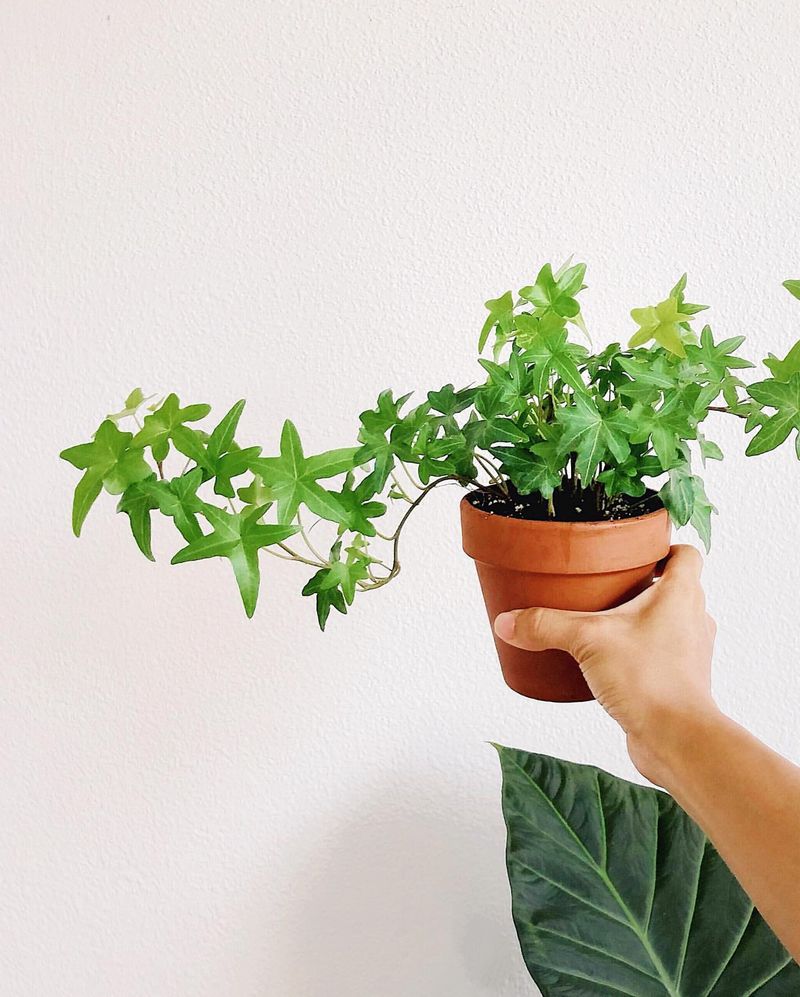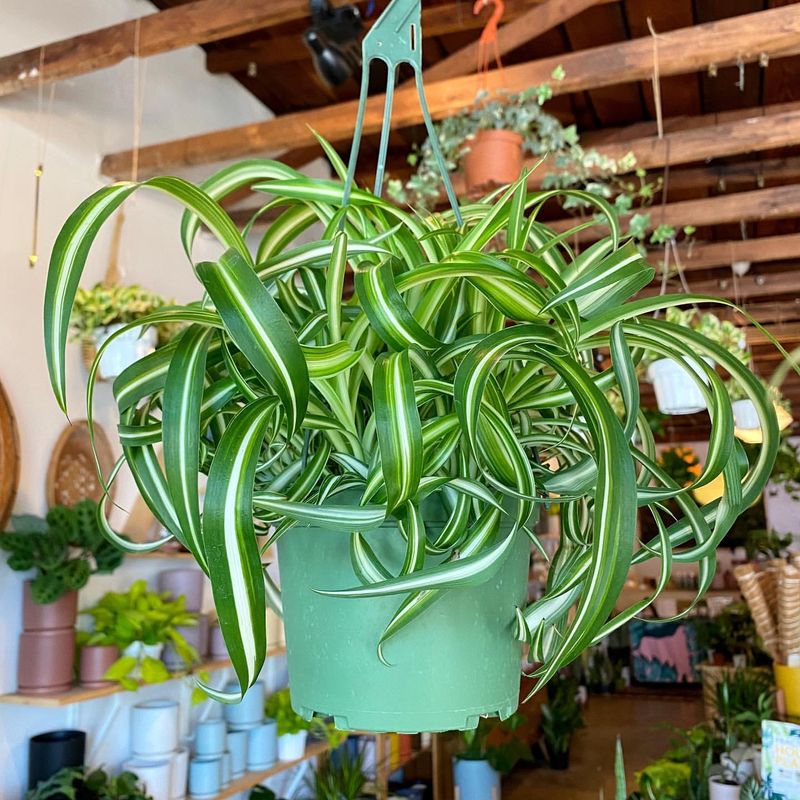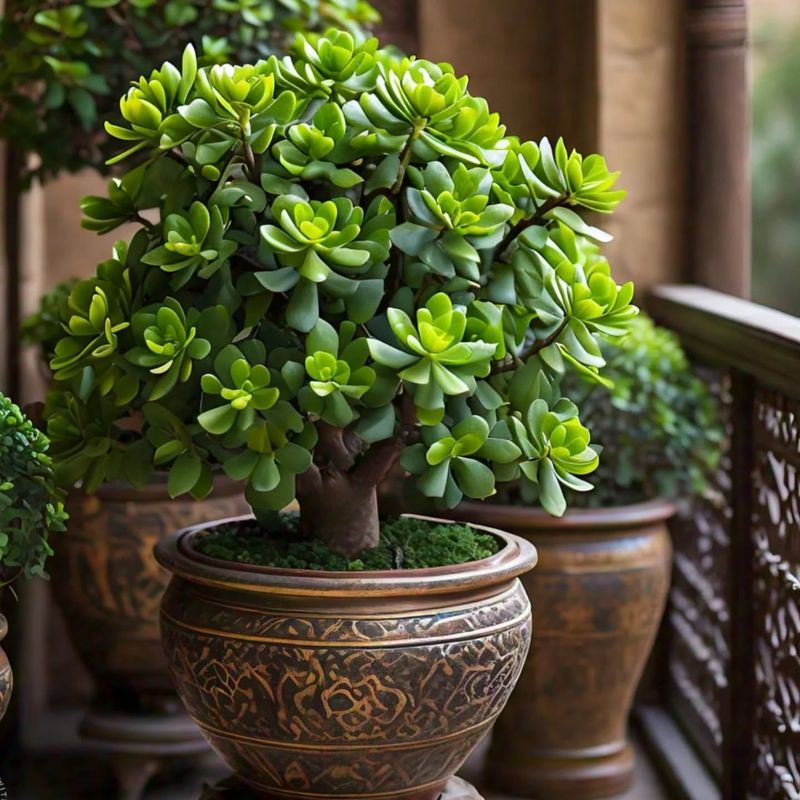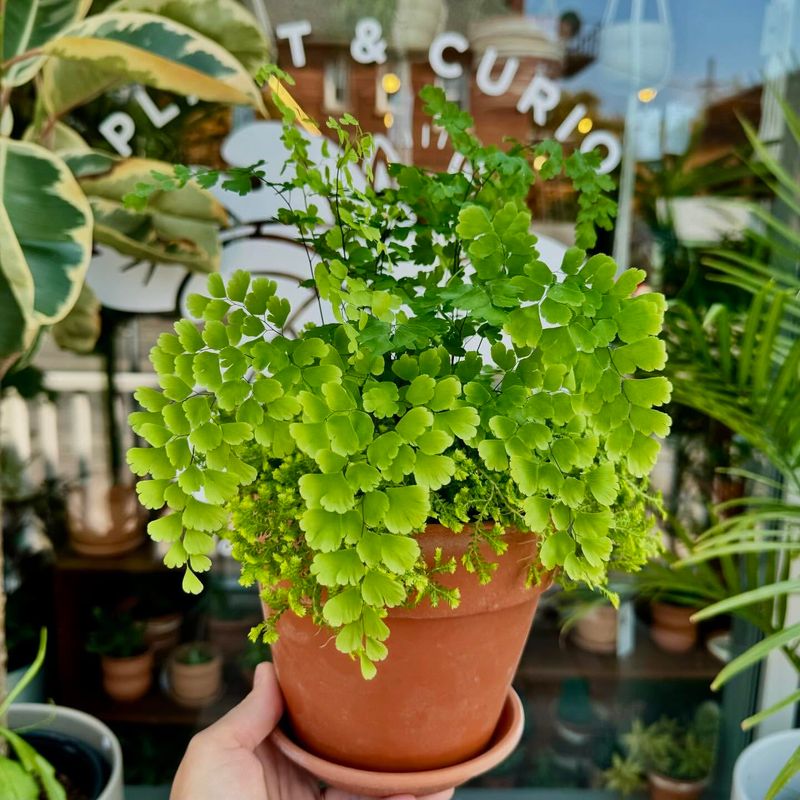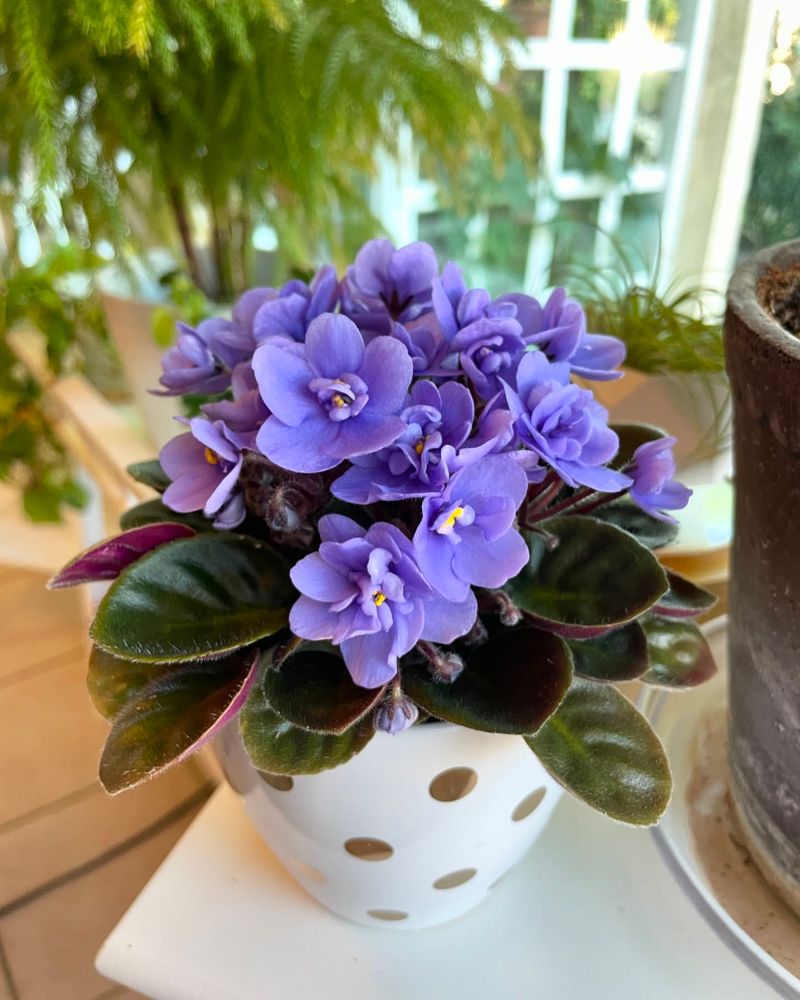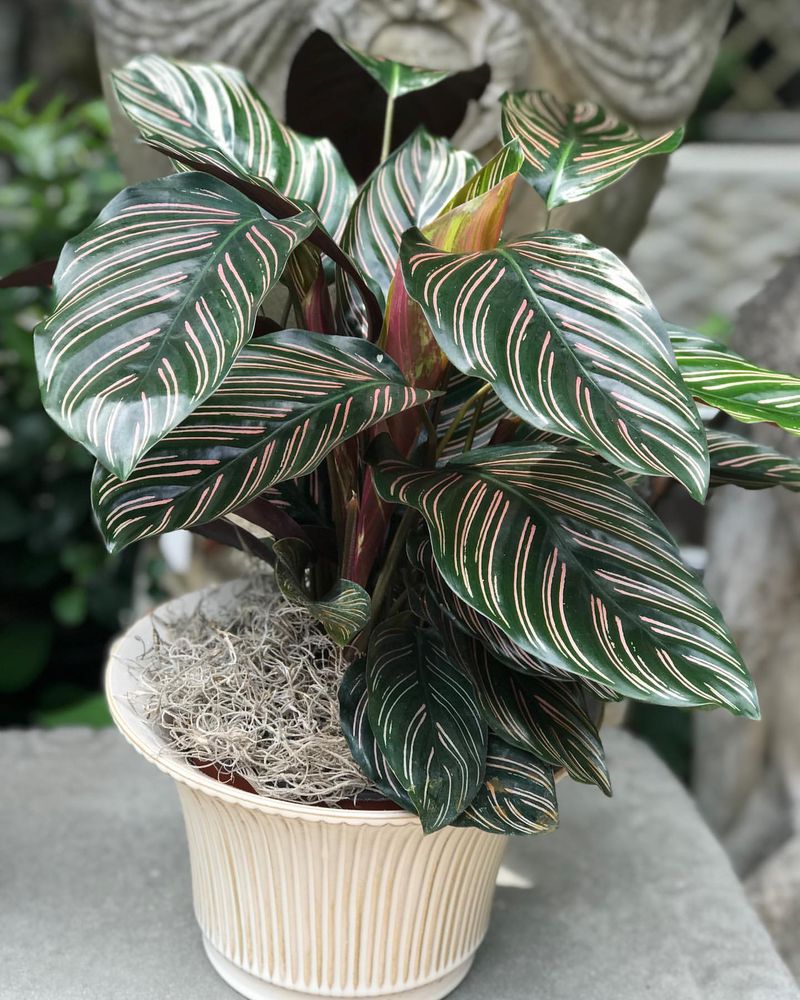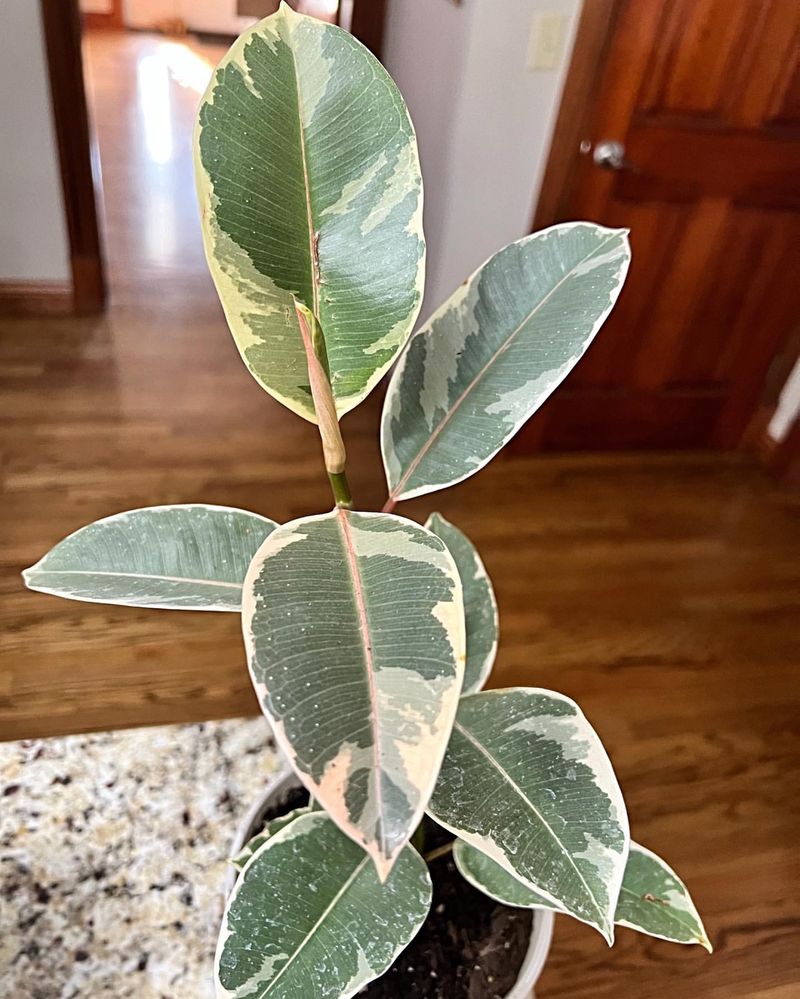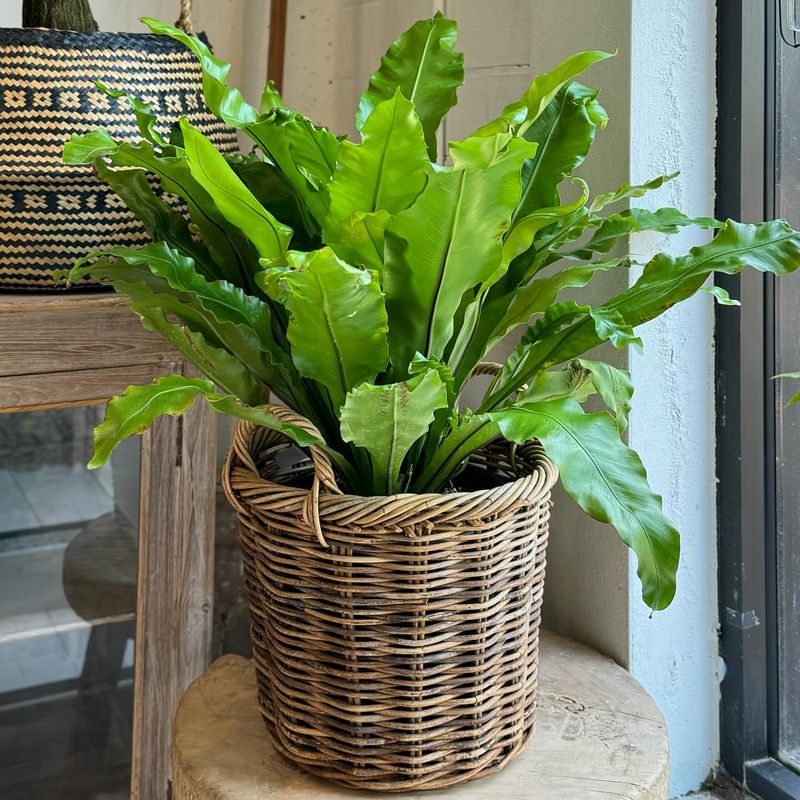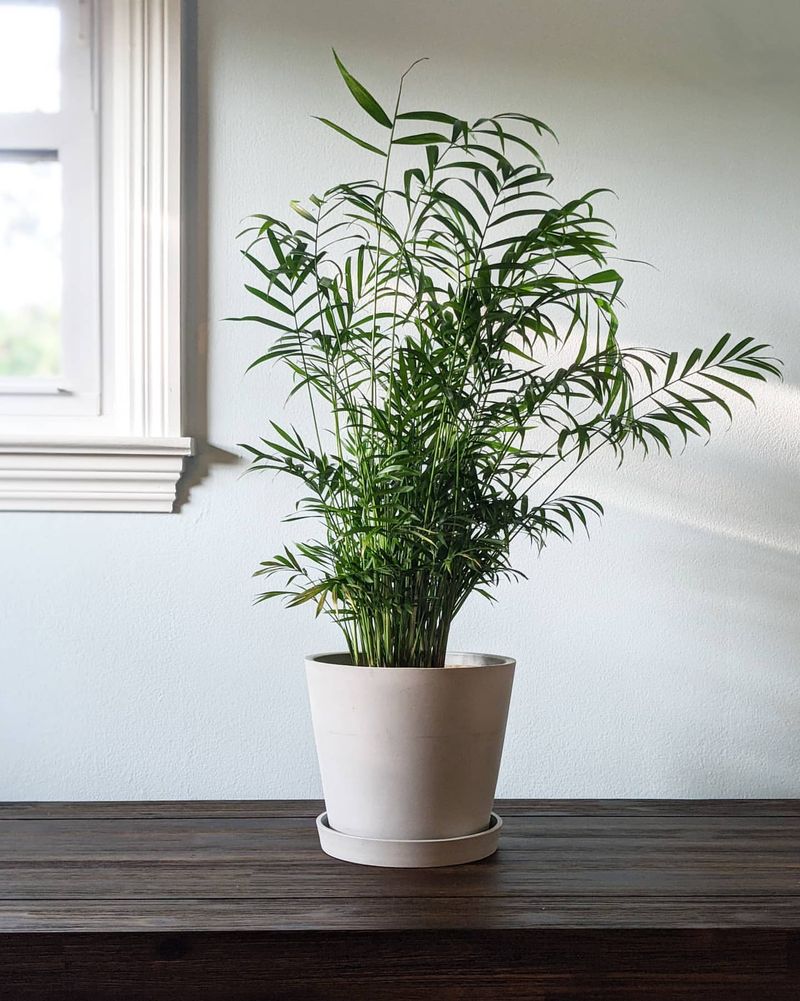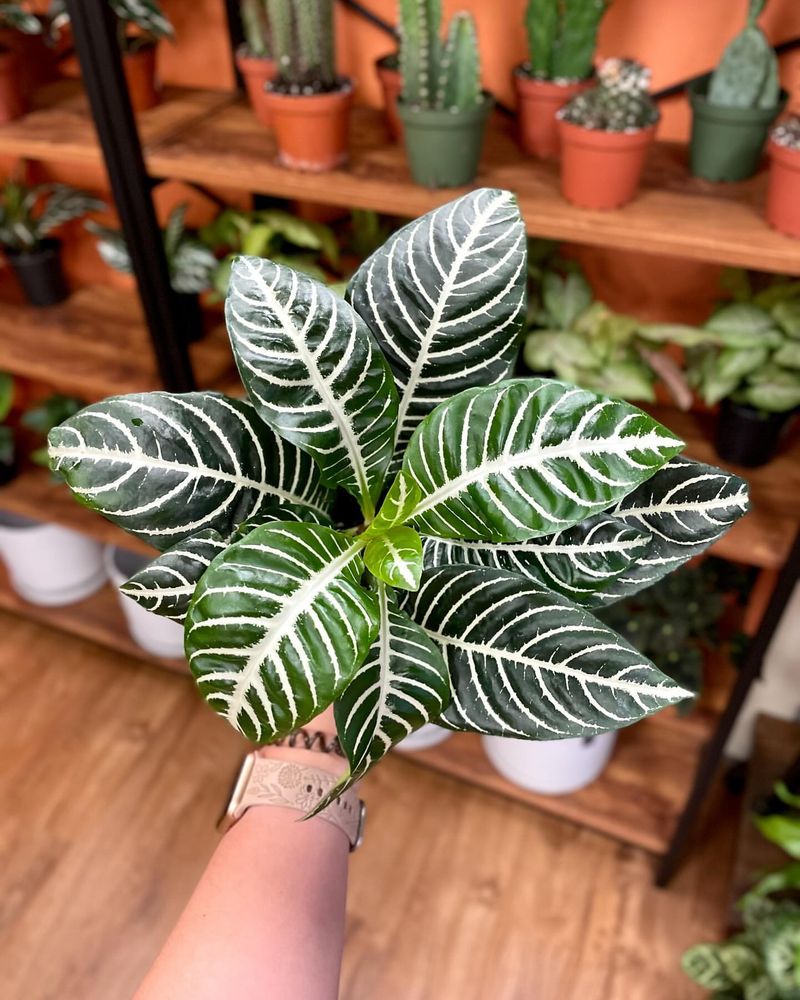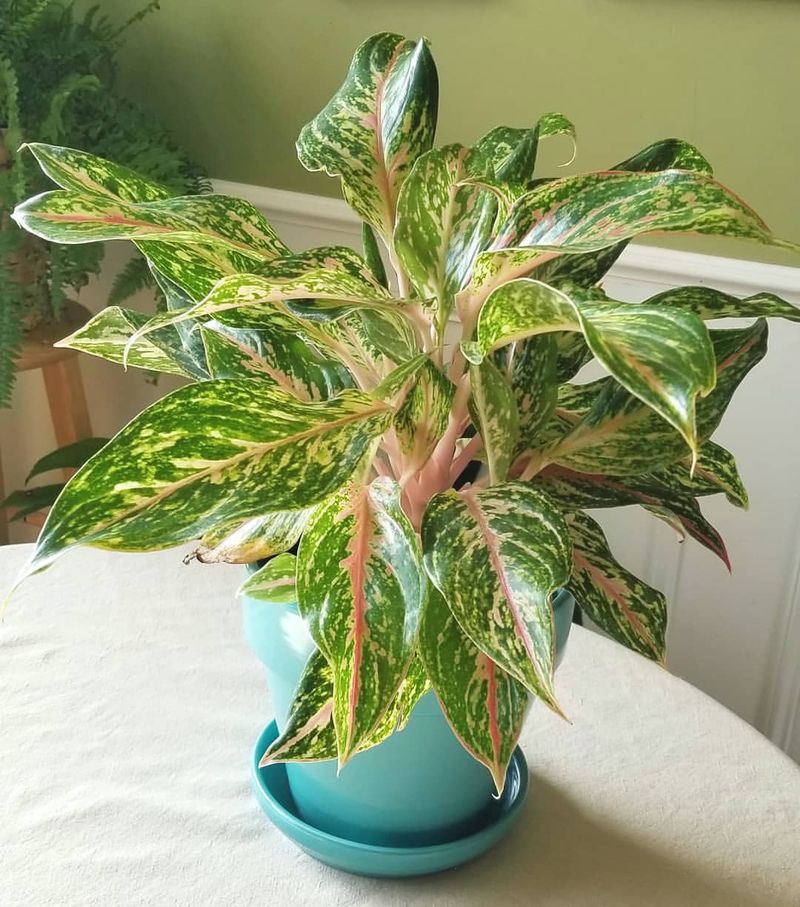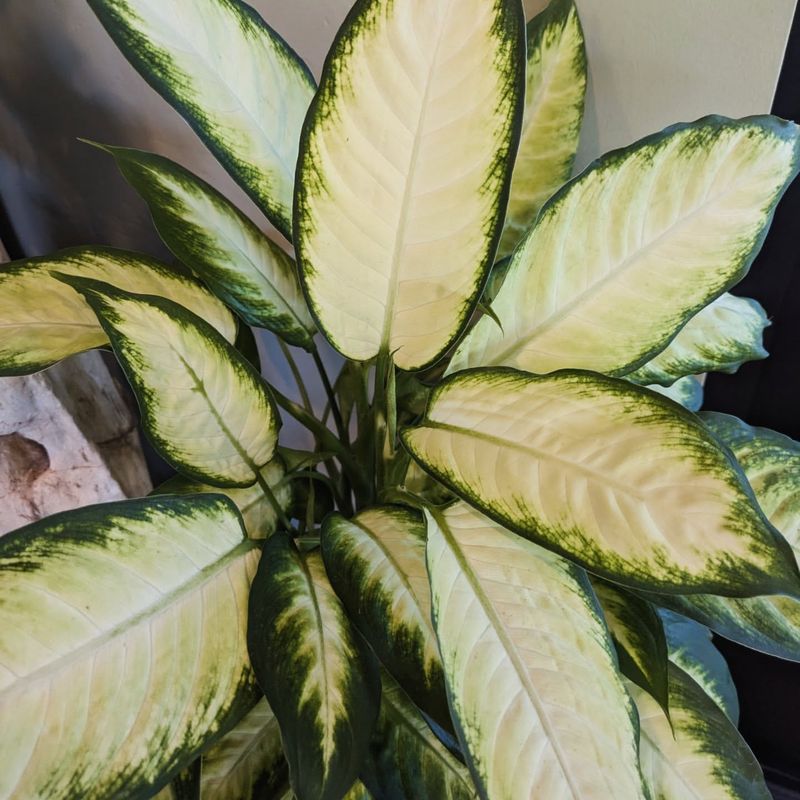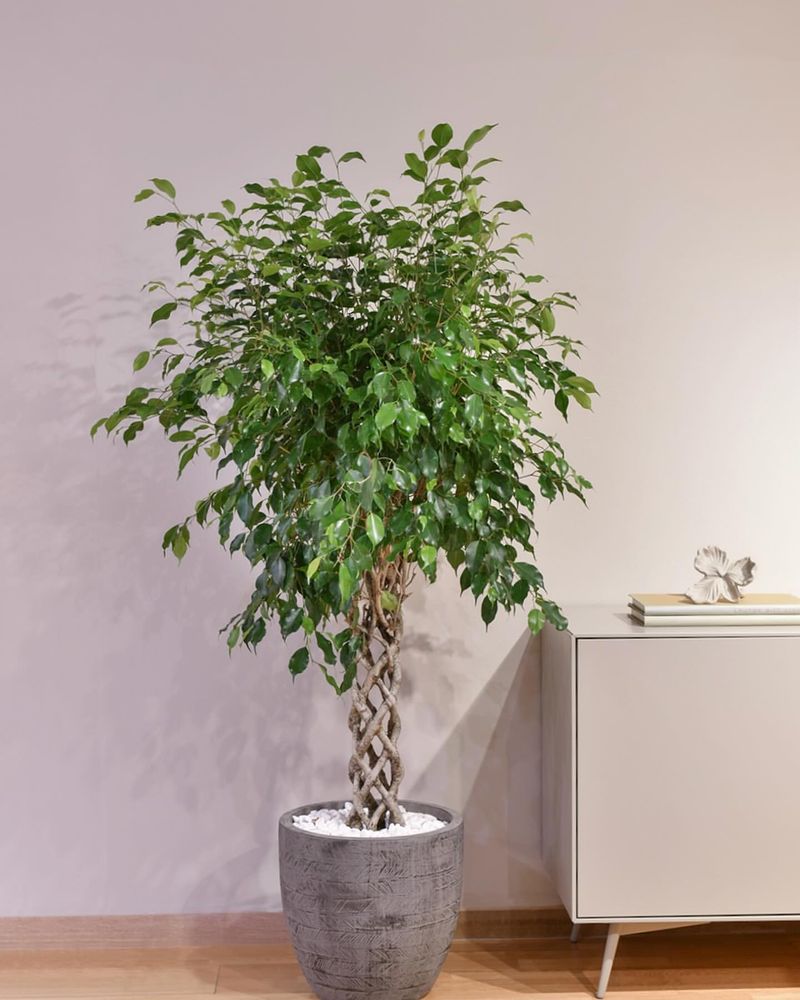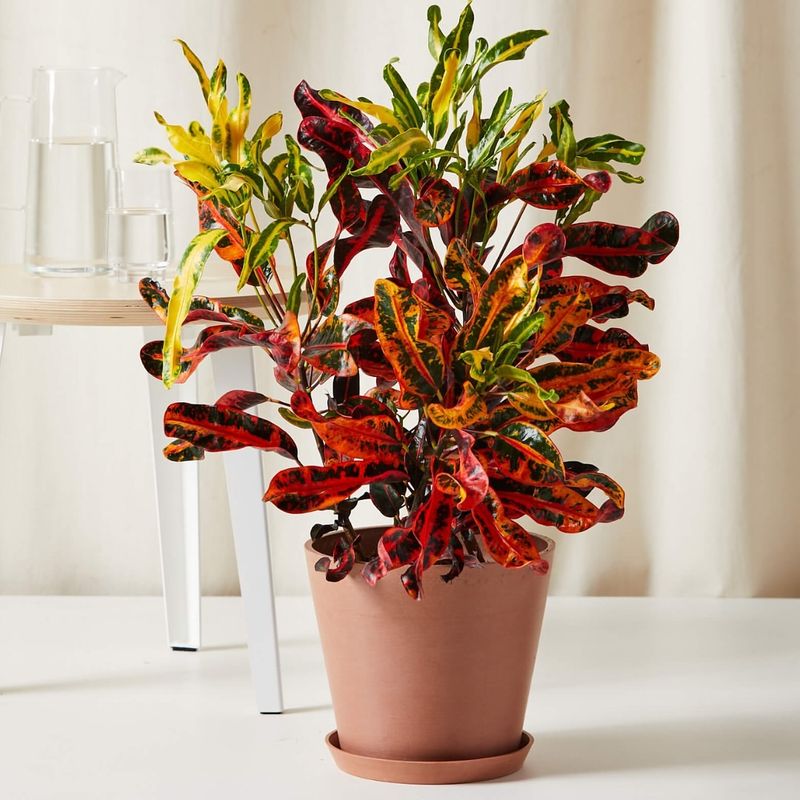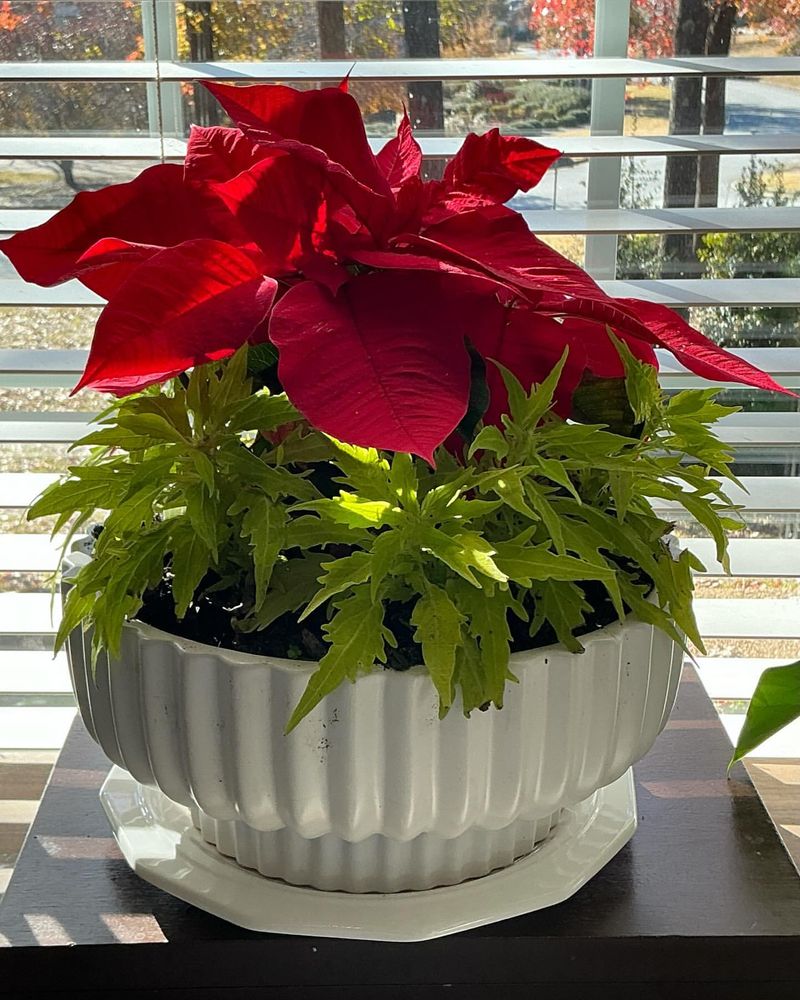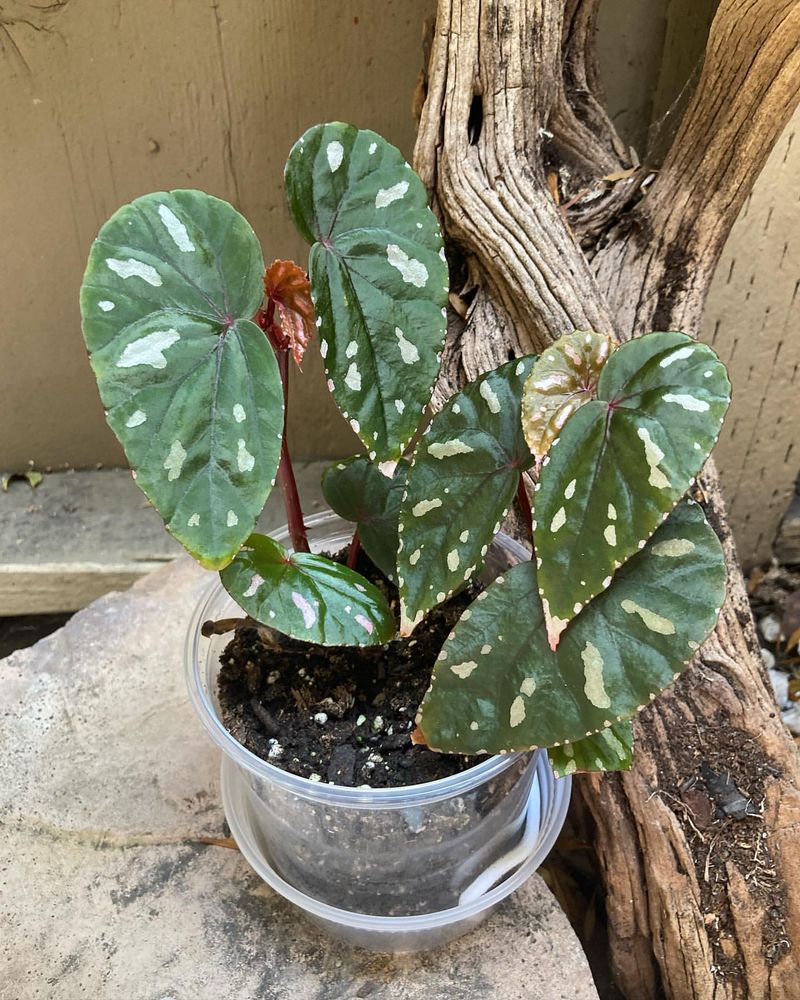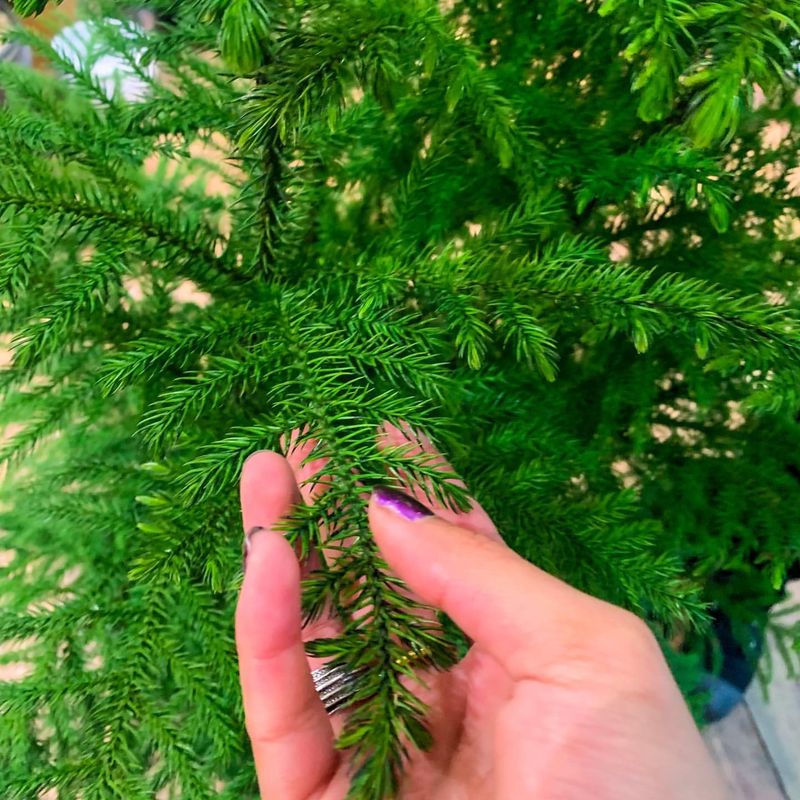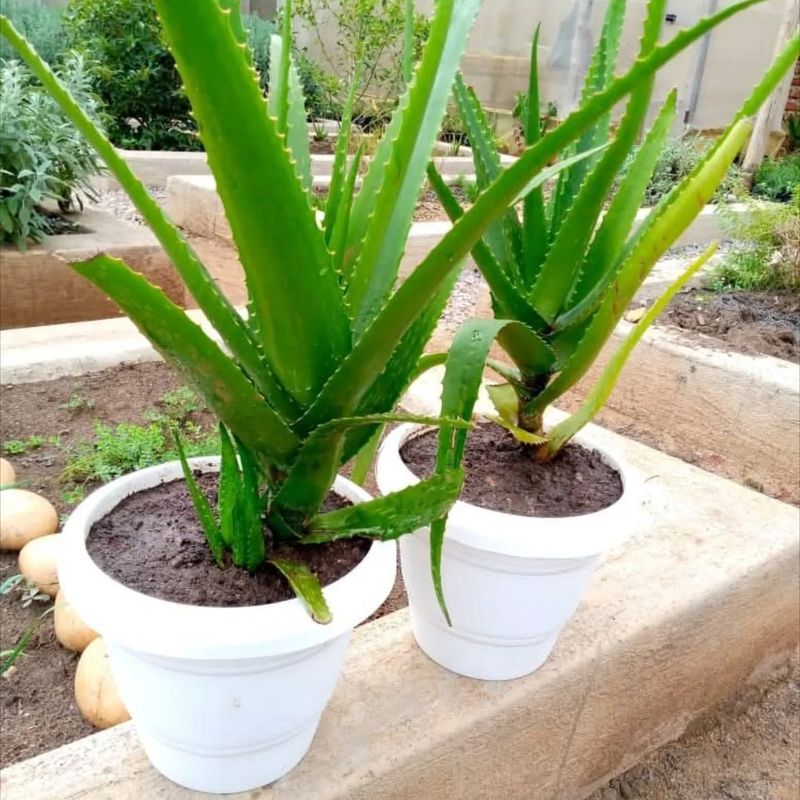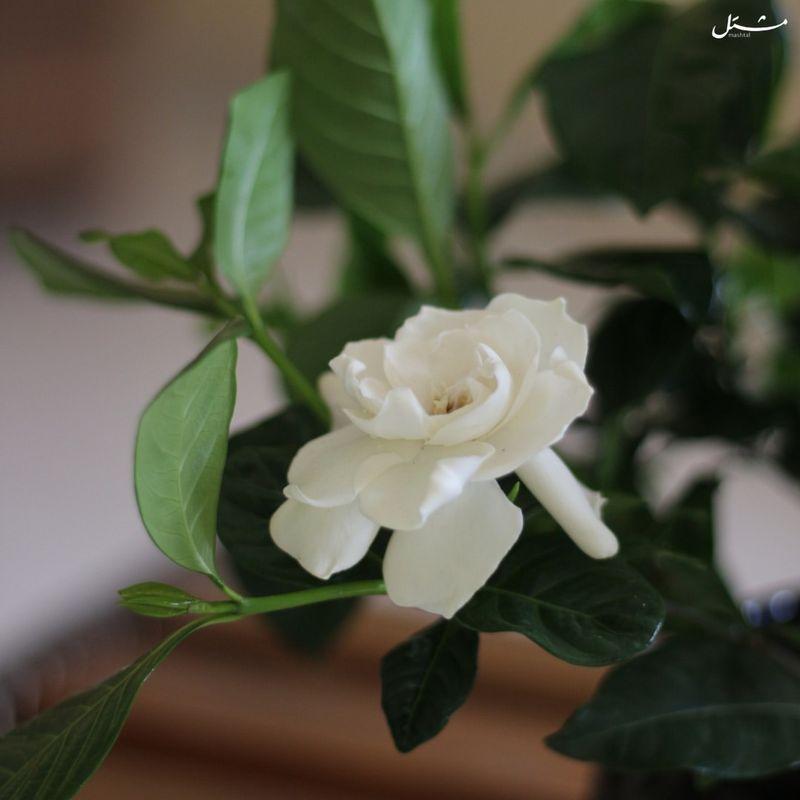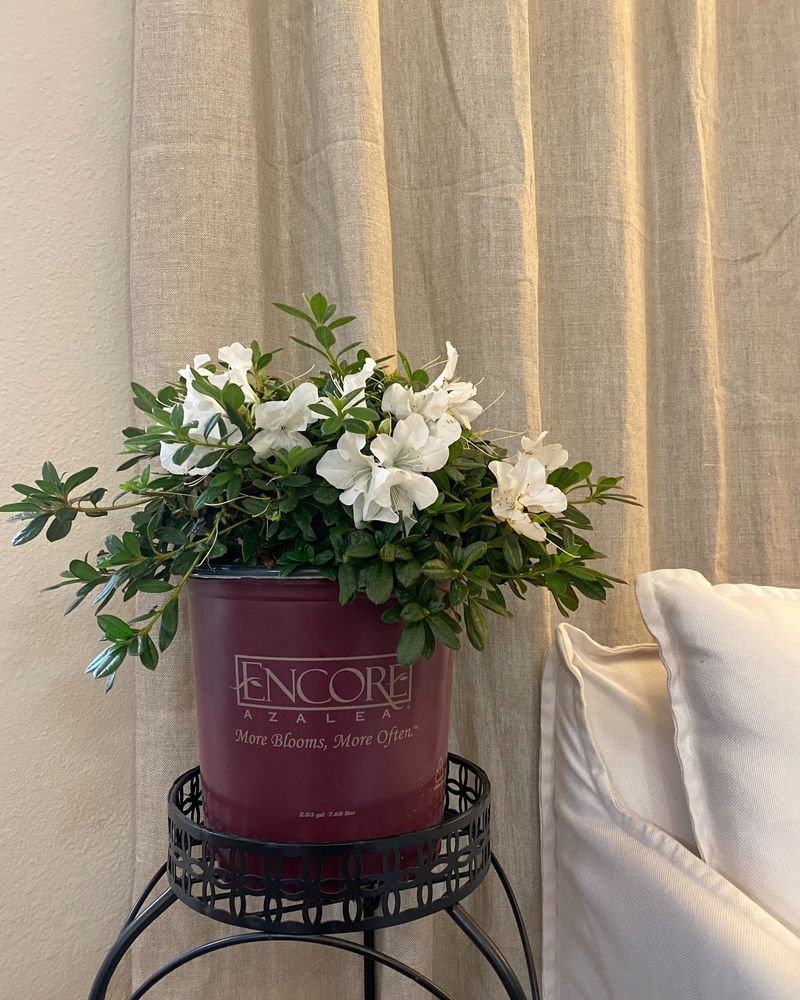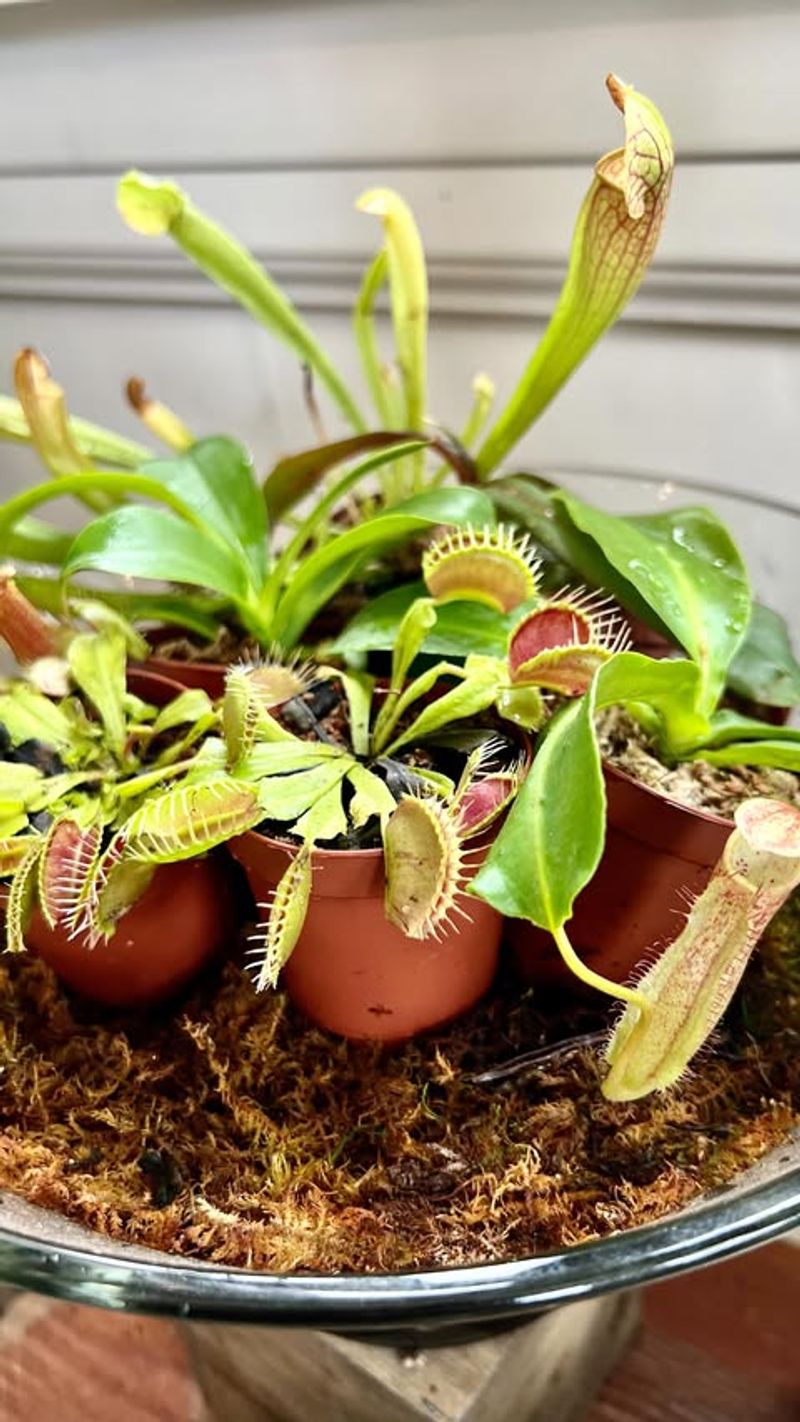I’ve always been fascinated by houseplants, and my home often resembles a mini-jungle. However, not all green companions have survived my hopeful care. Here are 25 popular houseplants I’ve found tricky to keep alive in typical home environments.
1. Fiddle Leaf Fig
The Fiddle Leaf Fig is a stunning centerpiece known for its large, waxy leaves. Sadly, it often meets its demise in most homes due to its need for bright, consistent light and high humidity.
Without the right conditions, its leaves may turn brown and fall off, leaving you with a bare twig. The slightest draft or a missed watering can send this plant into a downward spiral.
Yet, for those who can mimic its native tropical environment, the reward is a lush and vibrant display that can elevate any space.
2. Boston Fern
This plant’s lush, arching fronds make it a favorite for hanging baskets. However, maintaining a Boston Fern can be a challenge due to its high humidity needs.
Dry indoor air, especially during winter, can cause its fronds to dry out and turn brown. Overwatering or underwatering can both lead to its demise, as it demands a delicate balance.
For those who can maintain a humid environment, perhaps in a bathroom, the Boston Fern can thrive beautifully.
3. Orchid
Orchids are celebrated for their exquisite blooms, making them a popular choice for interiors. Unfortunately, they can be finicky and demanding in care.
Inconsistent watering, low humidity, and improper lighting can lead to root rot or leaf drop. Orchids require a specific watering cycle and a well-draining potting mix to mimic their natural habitat.
With patience and the right environment, these plants can reward you with stunning floral displays.
4. Peace Lily
The Peace Lily is known for its air-purifying abilities and graceful white blooms. Yet, its survival can be threatened by improper watering and lighting conditions.
This plant prefers consistent moisture but not soggy soil, which can lead to root rot. Sudden changes in temperature or drafts can also cause stress to the plant.
With careful attention to its needs, the Peace Lily can be a resilient and rewarding plant.
5. English Ivy
Known for its cascading vines, English Ivy is often used indoors for its decorative appeal. However, it can struggle in typical home environments.
It requires bright, indirect light and consistent moisture, conditions that aren’t always easy to maintain. Moreover, it’s susceptible to pests like spider mites if the air is too dry.
For those who can provide the right care, English Ivy can add a lush, green touch to their decor.
6. Spider Plant
With its arching leaves and small offshoots, the Spider Plant is both charming and easy to propagate. However, it’s not immune to common household challenges.
Fluctuations in temperature, inconsistent watering, and low light can cause its tips to brown and curl. This plant thrives in bright, indirect sunlight and requires a bit of humidity.
For those who can provide a stable environment, the Spider Plant can be a hardy and attractive addition.
7. Jade Plant
The Jade Plant is admired for its fleshy, oval leaves and bonsai-like appearance. Though considered a symbol of luck, it can be tricky to keep alive.
Overwatering is a common pitfall, leading to root rot in this succulent that prefers dry conditions. It thrives in bright light but can suffer in low-light areas often found in homes.
When given the right care and environment, the Jade Plant can live for many years, bringing a touch of elegance and tranquility.
8. Maidenhair Fern
With its delicate, lace-like leaflets, the Maidenhair Fern is a visual delight. Yet, its grace is matched by its demanding nature when it comes to care.
It craves high humidity and consistent moisture, often difficult to provide in a home setting. Dry air and inconsistent watering can quickly lead to its demise.
For those willing to meet its needs, the Maidenhair Fern offers a graceful and elegant addition to any collection.
9. African Violet
Renowned for their vibrant and numerous blossoms, African Violets are cherished by many. However, they demand precision in care that some find daunting.
This plant requires consistent moisture and indirect light, with too much water causing root rot. Its fuzzy leaves can be damaged by water droplets, making watering a careful task.
When nurtured properly, African Violets can reward you with continuous blooms and vibrant colors.
10. Calathea
Calatheas are adored for their striking foliage patterns that can brighten up any space. But their beauty comes with a need for perfect conditions.
These plants require high humidity and low light, which are challenging to maintain indoors. Dry air can cause their leaves to curl and become crispy.
Providing the right environment, with consistent moisture and humidity, allows Calathea to thrive and showcase its stunning leaves.
11. Rubber Plant
Known for its glossy, robust leaves, the Rubber Plant is a popular indoor tree. Yet, it can be quite sensitive to its surroundings.
Sudden changes in temperature or light can cause leaf drop, and it prefers a consistent watering schedule to avoid stress. Its need for bright, indirect light can be hard to fulfill in some homes.
For those who can cater to its needs, the Rubber Plant offers a striking and enduring presence.
12. Bird’s Nest Fern
With its unique rosette of wavy fronds, the Bird’s Nest Fern is a captivating choice for plant enthusiasts. However, its survival can be touch and go.
This fern thrives in high humidity and indirect light, a combination not easily found in many homes. Dry air and inconsistent watering can lead to browning fronds.
Those who can create a humid and stable environment will find this fern a delightful and rewarding companion.
13. Parlor Palm
The Parlor Palm brings an elegant, tropical vibe to any room with its feathery fronds. Despite its popularity, it can be challenging to maintain.
It adapts to low light but prefers bright, indirect sunlight and consistent watering. Fluorescent light can sometimes suffice, but the plant might suffer from dry indoor air.
With the right conditions, the Parlor Palm can be a robust and attractive addition to your indoor garden.
14. Zebra Plant
The Zebra Plant’s striking, striped leaves are a true visual delight. Yet, maintaining its beauty requires careful attention.
It demands bright, indirect light and high humidity, which can be difficult to provide indoors. Dry air and fluctuating temperatures can cause its leaves to drop.
For those who can meet its needs, the Zebra Plant offers a unique and eye-catching addition to their plant collection.
15. Chinese Evergreen
Admired for its striking variegated leaves, the Chinese Evergreen is a favorite among houseplant enthusiasts. Nevertheless, it has its own set of challenges.
While it tolerates low light, it prefers bright, indirect light and consistent watering. Overwatering can lead to root rot, and dry air can cause leaf browning.
With the right care, the Chinese Evergreen can be a durable and attractive houseplant that brightens any space.
16. Dieffenbachia
The Dieffenbachia, or Dumb Cane, is known for its large, eye-catching leaves. However, its care requirements can sometimes stump even the seasoned plant owner.
It needs bright, indirect light and consistent moisture to thrive, but it can suffer in low-light conditions or from irregular watering.
For those who can navigate its needs, Dieffenbachia offers a lush and vibrant addition to their home.
17. Weeping Fig
The Weeping Fig is a grand indoor tree with graceful branches. Its beauty, however, demands a stable environment to flourish.
Frequent changes in light, temperature, or location can lead to leaf drop. It prefers bright, indirect light and a consistent watering routine.
When its environment is stable, the Weeping Fig adds a touch of elegance and a natural focal point to any room.
18. Croton
Crotons are celebrated for their vibrant foliage colors, bringing a splash of color to any interior. But their care can be a colorful challenge.
They need bright light to maintain their colors, consistent moisture, and dislike drafts or temperature changes.
With the right conditions, a Croton can be a lively and eye-catching houseplant that stands out in any setting.
19. Poinsettia
Famed for their bright red bracts, Poinsettias are synonymous with the holiday season. However, extending their life beyond the holidays can be tricky.
They require bright, indirect light and careful watering to prevent leaf drop. Temperature fluctuations and drafts can stress the plant.
When cared for properly, Poinsettias can bring festive cheer to your home throughout the season.
20. Begonia
Begonias offer a dazzling array of colors and leaf shapes, making them a popular choice. Yet, their beauty is matched by their finicky care needs.
They prefer bright, indirect light and consistent moisture, but overwatering can lead to root rot.
For those who master their care, Begonias can provide a stunning and colorful display year-round.
21. Norfolk Island Pine
The Norfolk Island Pine can evoke a touch of the outdoors inside with its soft, evergreen branches. However, maintaining this indoor tree can be a challenge.
It needs bright, indirect light and high humidity, often a far cry from typical home conditions. Its needles can dry out and drop in dry air.
For those who can create its ideal environment, the Norfolk Island Pine offers year-round greenery and a sense of tranquility.
22. Aloe Vera
Aloe Vera is not only sought after for its medicinal properties but also for its easy-going nature. Yet, it’s not without its pitfalls.
It thrives in bright light and dry conditions but can suffer from overwatering. Placing it in low light or a humid environment can lead to rot.
When given the right care, Aloe Vera can be a lasting companion that provides both beauty and utility.
23. Gardenia
Gardenias are beloved for their fragrant white flowers and glossy green leaves. However, these beauties come with a high maintenance cost.
They demand bright, indirect light, high humidity, and acidic soil conditions, which can be difficult to replicate indoors.
For those who can rise to the challenge, Gardenias offer a truly rewarding and aromatic experience.
24. Azalea
Azaleas are prized for their vibrant blooms that add a splash of color indoors. Yet, their care requires attention to detail.
They need bright, indirect light and prefer cool, humid conditions. Overwatering or poor drainage can quickly lead to root rot.
With the right care, Azaleas can provide a breathtaking display of flowers that brighten any room.
25. Carnivorous Plant
Carnivorous plants, like the Venus Flytrap, intrigue with their insect-eating habits. But maintaining such a plant indoors can be a bug-eating challenge.
They require bright light, high humidity, and distilled water to mimic their natural boggy habitats. Tap water and dry air can be detrimental.
For those who can meet these unique needs, carnivorous plants offer a fascinating and interactive addition to their plant collection.

